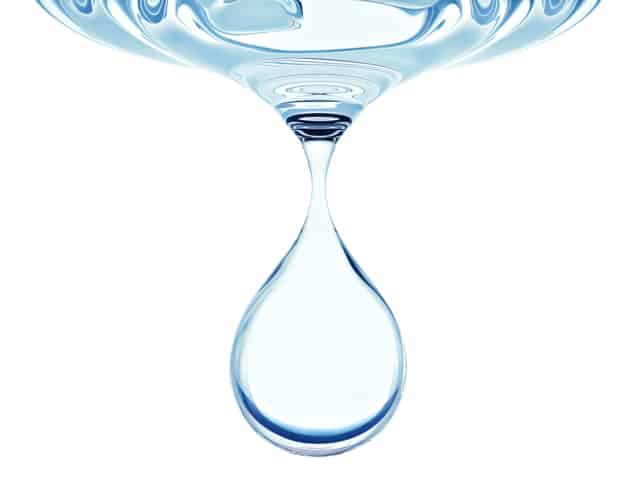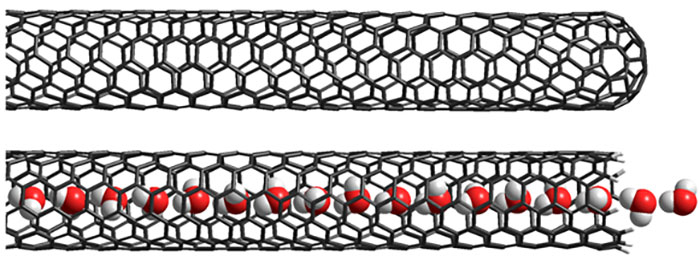
Shock waves fired repeatedly into water samples can remove dissolved salts, according to A Sivakumar and Martin Britto Dhas of the Sacred Heart College in Tirupattur, India. The researchers say that the effect involves a cavitation-based nucleation mechanism that could be useful for the pretreatment of water at desalination plants. However, not everyone is convinced by their findings.
When supersonic shock waves pass through liquids, they can trigger cavitation and create tiny bubbles that then collapse and trigger liquid-to-solid phase transformations.
“The phase transformation rate is associated with physicochemical parameters such as pressure, temperature, ionic strength, velocity of waves, degree of supersaturation, non-equilibrium thermodynamics of the medium and the kinetics of the nucleation phase,” write Sivakumar and Dhas in the Journal of Applied Crystallography.
More work needed
“In spite of these important facts,” they continue, “only a very small amount of work has been so far directed to understand the impact of shockwaves on various conditions such as pH, temperature or saturation index — which give rise to nucleation and growth kinetics”.
To investigate the latter, the duo passed shock waves through two water samples of different salinities — one a groundwater sample and the other seawater. The shock waves were generated by an air-compressor device that builds up pressure on one side of a diaphragm. When the diaphragm ruptures, shock waves are produced on the other side. Two microphones are used to measure each shock wave’s acoustic profile and speed. By varying the strength of the diaphragm, Sivakumar and Dhas say device can create shock waves ranging in speed from Mach 1 to 5.
The researchers subjected samples of both water types to shock waves of varying speeds, repeating the shock waves every five seconds. They report that, as the shocks were applied, the water samples grew turbid, with precipitates of salt subsequently settling at the bottom of each sample container.
Non-equilibrium state
“The main concept of acoustic cavitation is that the momentum of the applied shock wave produces vibrating micro-sized bubbles in the cavitation phase and such bubbles undergo collapse in a very short time,” the researchers write. This establishes a non-equilibrium thermodynamic state, they add, with bubble collapse forcing dissolved elements into a solid phase, at which point “the nucleation process separates these previously dissolved solid particles from the liquid medium”.
“A Mach number of 2.2 gives the maximum value [of precipitation],” they report, adding that above this, “crystallized salts are redissolved owing to the high dynamic pressure and temperature, hence the net amount of crystallization is reduced.”
At Mach 2.2, total precipitation volumes increase linearly with the number of shocks, up to a maximum number of 200 shocks when no further salts are deposited.
Crystalline deposits
Collecting the precipitated salts by running the post-shockwave samples through filter paper, the team analysed the deposits using powder X-ray diffraction, energy-dispersive X-ray spectroscopy and scanning electron microscopy. They report that the precipitate is crystalline in nature, comprising spherical particles that are larger when derived from groundwater. The particles contain various elements – such as chlorine, potassium and magnesium — that are consistent with the dissolved contents of the original water.
“Although this process could not remove the dissolved salts completely, shockwaves could be used as an alternative tool for the pretreatment of sea water in desalination plants,” the team conclude – noting that the method would require no additional chemicals and not call for any water rejection as part of the process. Their paper provides no indication, however, of how the approach might scale up for commercial applications, with the volume of water used in the current study itself left unclear.
“There has been growing interest in new methods of crystallization in recent years,” says, Robert Compton, of the University of Tennessee, Knoxville says. He points out that these methods include using lasers to create shock waves in liquids. “The paper by Sivakumar and Dhas presents another method of sonication using simple salts as examples of its utility,” he adds. “We await the application of this method to the production of difficult to produce crystals such as amino acid crystals and other biologically relevant materials.”
Questions remain
However, another expert, who wished to remain anonymous, is skeptical and questions both the study’s lack of a control sample of distilled or deionized water and the robustness of the described analysis of the precipitates.

Quasi-phase transition spotted in water-filled carbon nanotubes
“Their claim is thermodynamically unbelievable – you can’t precipitate below saturation, the nucleation sites would redissolve as soon as the collapsed bubble is gone. I suspect that they are reacting some organics in the cavitation event and precipitating salts from the resulting oxidation of organics.”
Tim Mason of the University of Coventry compared the work to the field of sonocrystallization. This cavitation-based technique uses ultrasound and was discovered in 1927. “Yet,” he adds, “this paper on shock wave precipitation makes no mention whatever of sonocrystallization.
With their initial study complete, the researchers are now conducting “an investigation of the physical, chemical and biological parameters of the shock wave-treated water”.



